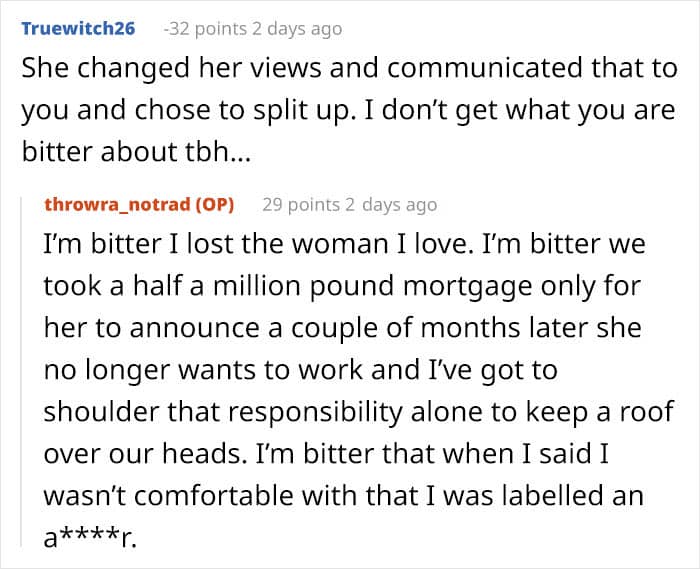Lets face it, if one had to choose between a life of leisure or a nine-to-five, the vast majority of folks out there would pick the former. This is perhaps one of the leading reasons being a “tradwife” has become all so much more popular. However, it does take two to tango.
A man asked if he was wrong to lay out a long list of his own demands when his wife kept pressuring him to let her just be a tradwife. Later, he shared a bit of an update. We reached out to the man who shared the post via private message and will update the article when he gets back to us.
RELATED:Some women think being a domestic housewife means a life of relaxation and no worries

Image credits: EyeEm / freepik (not the actual photo)
But one man told his wife that if she really wanted to be a tradwife, she’d actually have to act like one






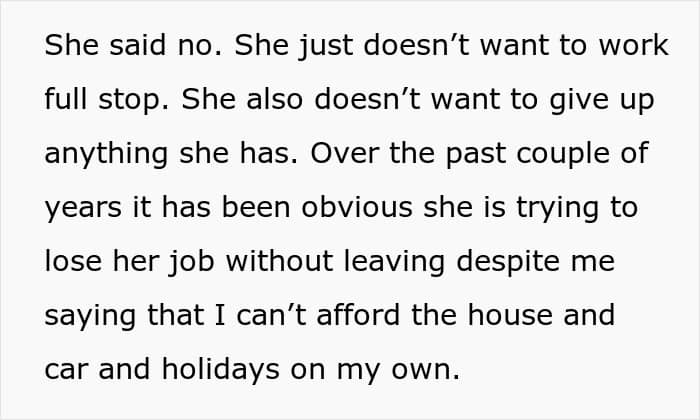



Image credits: prostooleh / freepik (not the actual photo)





Image credits: Alena Darmel / pexels (not the actual photo)

Image credits: throwra_notrad
Many people “fall” for an idealized lifestyle presented by influencers online

Image credits: tonodiaz / freepik (not the actual photo)
The “tradwife” movement, a contraction of “traditional wife“, promotes a return to traditional gender roles, promoting specifically a mid-20th-century model in which women do homemaking and care work and men work as the breadwinner. The trend portrays domesticity, baking, sewing, child-rearing, home maintenance, as moral and empowering in and of itself, even while it calls up nostalgia for an era of more rigid gender hierarchies. Influencers tend to frame the choice in terms of an assertion of autonomy, arguing that opting into home roles is just as valid as opting into careers outside the home.
There are several reasons that some women find tradwife messaging attractive and actively seek out this lifestyle. First, the complexity and velocity of modern life can be overwhelming: negotiating careers, social expectations, digital connectedness, and financial pressures generates anxiety and burnout for many. The tradwife movement offers a bounded, contained identity and habit, cooking, home keeping, dressing in retro-style clothing, that promises stability and significance rooted in care and nurture. Such a sense of a coherent self amid the drudgery of a 9-to-5 can be powerfully alluring during periods of uncertainty such as economic instability or cultural upheaval.
Social media magnifies these messages. On Instagram and TikTok, tradwife influencers showcase idyllic domestic scenes, spotlessly decorated houses, home cooking, vintage clothing, set to sappy, cloying music. These short clips distill complex social and economic problems into visually appealing, bite-sized content. They create a sense of belonging for followers who share tips about home-making, relationship roles, and self-care framed as preparation for a traditional marriage. Algorithmic amplification of such content can maximize identification with the lifestyle, as users become repetitively exposed to the same narratives of fulfillment through domestic roles.
Being a tradwife means giving up a significant part of one’s agency

Image credits: Ambreen / freepik (not the actual photo)
Psychologically, the embracing of tradwife values can be a backlash against perceived failures or demands of modern feminism and careerism. Some women find the “empowerment” discourse of doing anything to be fragmenting or disillusioning, especially if work-life balance is unrealized or unviable. Tradwife rhetoric reframes some of the relinquishing of ambitions as a virtue, rather than a loss, and offers an alternative narrative in which fulfillment is achieved through family work and clear roles of responsibility. This is reinforced in some communities by peer approval and the framing of traditional marriage as a bulwark against social collapse and uncertainty.
The overlap of the movement with feminist rhetoric, summoning slogans of autonomy to preserve traditional roles, betrays a tension: it appropriates feminist gains (agency, choice) to legitimize a lifestyle that previously confined women’s options. Critics argue this individualistic framing overlooks structural realities (economic inequality, lack of social provisioning for care work) and might undermine broader gender-equality gains. Furthermore, while the majority of tradwife activists assert no direct political alignment, the aesthetic and rhetoric often overlap with conservative or reactionary politics, authorizing imaginings of gender hierarchy beneath which critics consider regressive.
At the same time, agency needs to be acknowledged: for some women, the choice of a domestic life can, in fact, be satisfying if it is aligned with personal values and circumstance. Yet the ubiquity of romanticization on social media blinds individuals to the work intensity, economic dependencies, and potential isolation involved in this type of lifestyle. Why women are attracted to tradwife messaging can only be explained by recognizing the intersection of modern anxieties, the search for identity and belonging, economic realities, and the seductive simplicity of the curated online narratives. It can perhaps be helpful to hear from women who’ve actually tried it and decided to back out. If you were curious to learn what happened next, you’re in luck, as he later shared an update which can be found below.
He shared some more details in the comments




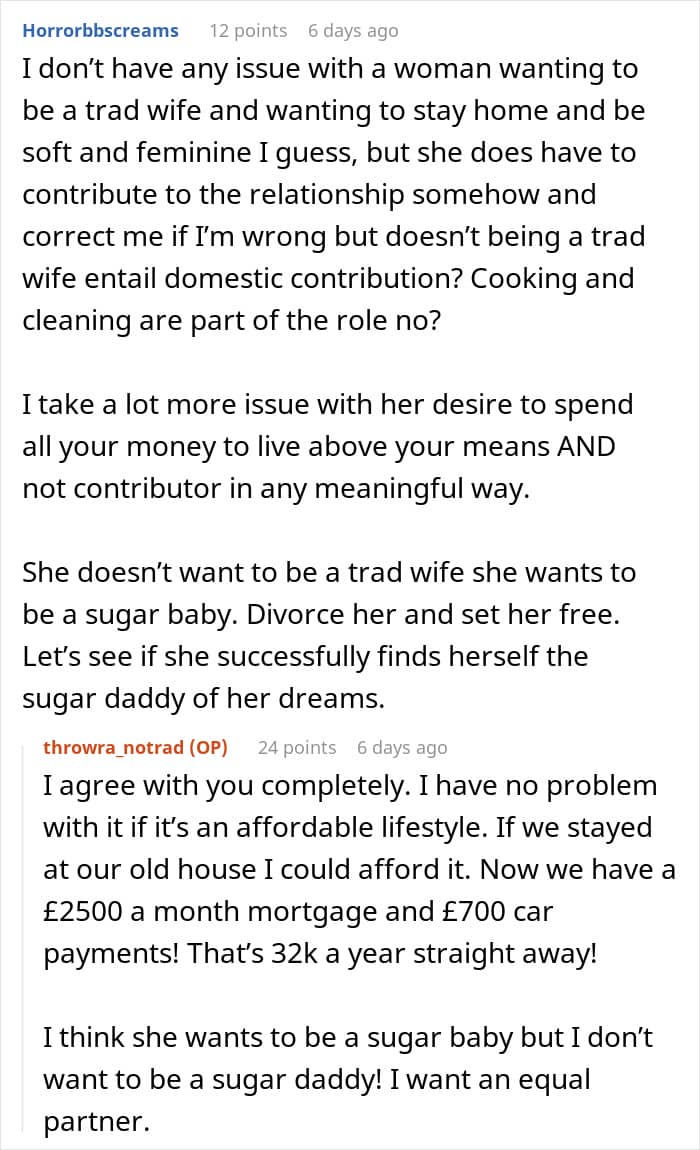



Many thought he was not unreasonable and should look into a divorce
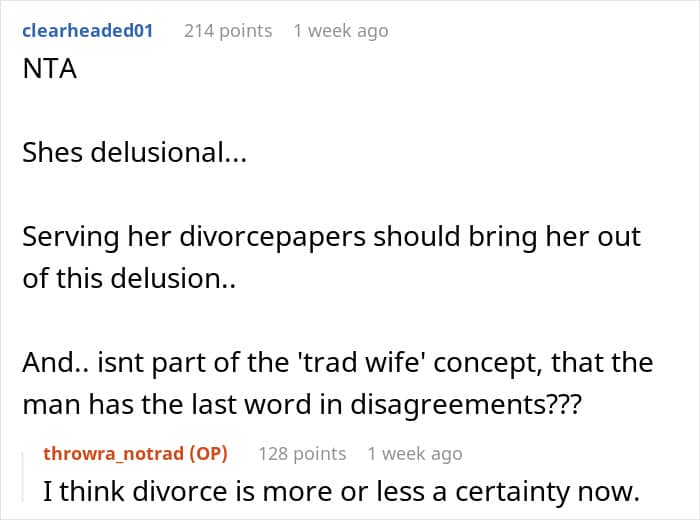



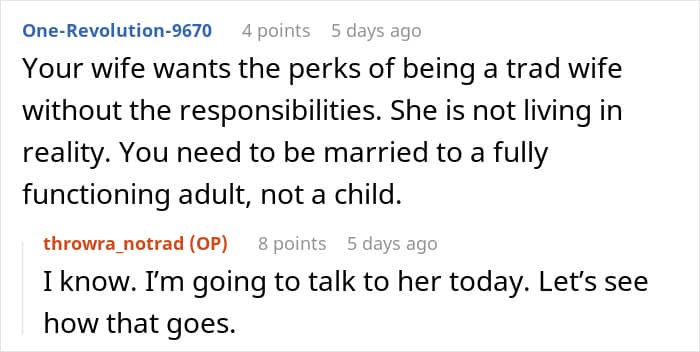








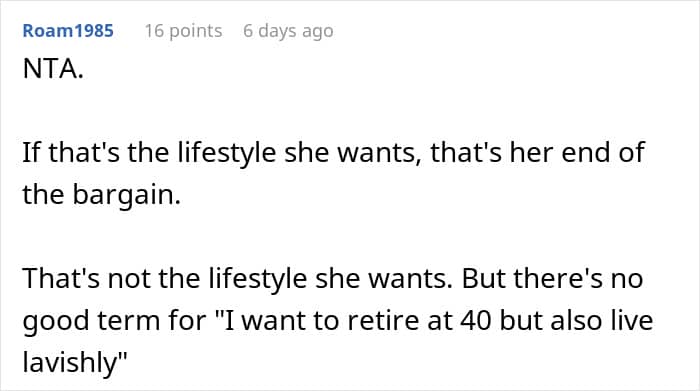

Later, he shared an update

Image credits: yesorno / freepik (not the actual photo)
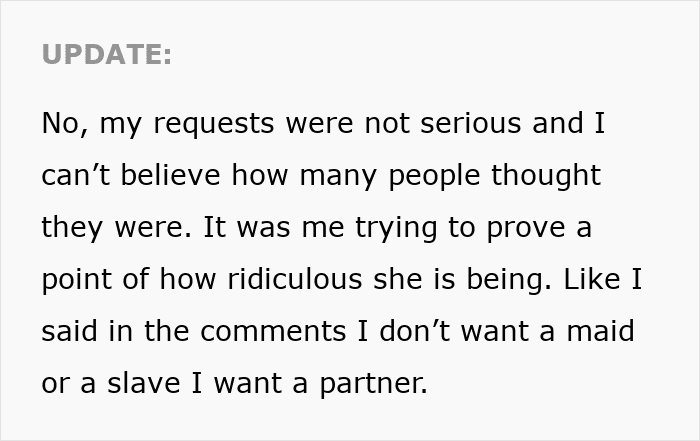


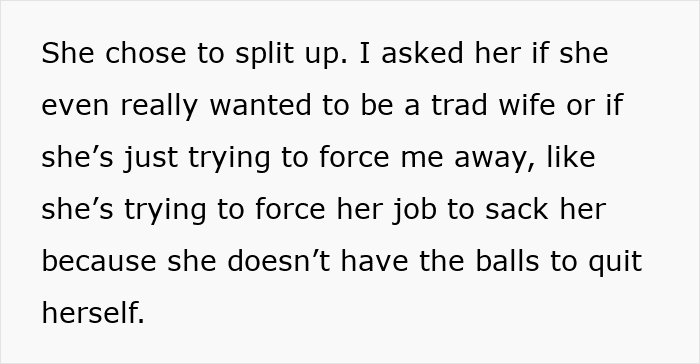


Image credits: freepik (not the actual photo)




Image credits: throwra_notrad
People thought he made the right move





